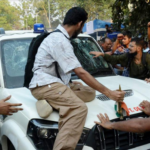Hamas Hints conflict between Israel and Hamas escalates, reports of potential ceasefire discussions have surfaced amidst ongoing military operations in Gaza. Hamas, the governing entity in Gaza, has signaled its willingness to explore truce options, even as Israel intensifies its offensive in the region. The situation remains highly volatile, with devastating consequences for civilians caught in the crossfire.
This article delves into the latest developments, the history of the conflict, the potential implications of a ceasefire, and the broader geopolitical dynamics shaping this crisis.
1. The Current Situation in Gaza
A. Intensified Offensive by Israel
Israel has launched an extensive military campaign in Gaza in response to rocket fire from Hamas and other militant groups. The operation, which includes airstrikes, artillery barrages, and potential ground incursions, aims to target Hamas’ leadership, infrastructure, and weaponry.
- Civilian Impact: The heavy bombardment has resulted in significant civilian casualties and widespread destruction of homes, hospitals, and schools. The United Nations has warned of a growing humanitarian crisis in the region.
- Military Objectives: Israeli officials have stated that the campaign is aimed at weakening Hamas’ capabilities to prevent future attacks on Israeli territories.
 For the more information click on this link
For the more information click on this link
B. Hamas’ Position
Hamas has retaliated with continued rocket fire into Israeli cities, causing casualties and damage. However, recent statements suggest that the group may be open to ceasefire negotiations under specific conditions.
- Resistance and Diplomacy: While maintaining its stance as a resistance movement, Hamas has hinted at the possibility of a truce, likely seeking a pause to regroup and address the dire humanitarian conditions in Gaza.
2. Background of the Israel-Hamas Conflict
A. Historical Roots
The conflict between Israel and Hamas is rooted in decades of territorial disputes, political tensions, Hamas Hints and mutual mistrust.
- The Blockade on Gaza: Since Hamas took control of Gaza in 2007, Israel and Egypt have imposed a blockade, restricting the movement of goods and people. This has contributed to severe economic hardships and fueled resentment among Gazans.
- Recurring Violence: Periodic escalations, including major conflicts in 2008-09, 2012, 2014, and subsequent skirmishes, have become a tragic pattern in the region.
B. Current Trigger
The latest violence was triggered by a combination of factors, including:
- Clashes in Jerusalem: Tensions in East Jerusalem, particularly around the Al-Aqsa Mosque, Hamas Hints have often served as flashpoints for broader escalations.
- Political Dynamics: Internal politics within both Israel and Palestinian territories have also played a role, with leaders on both sides facing pressure from hardline factions.
3. Potential for a Ceasefire
A. Hamas’ Proposal
Hamas’ hints at a truce suggest the group may be seeking a de-escalation to alleviate the dire humanitarian conditions in Gaza and avoid further military losses.
- Conditions for a Ceasefire: Hamas may demand an end to Israeli airstrikes, Hamas Hints lifting of the blockade, and concessions on Palestinian rights in Jerusalem.
B. Israel’s Stance
Israel’s response to ceasefire overtures has been cautious, with officials emphasizing the need to achieve their military objectives before considering a truce.
- Concerns About Hamas’ Motives: Israeli leaders have expressed skepticism about Hamas’ intentions, viewing ceasefires as opportunities for the group to rebuild its arsenal.
4. Humanitarian Impact
A. Civilian Suffering in Gaza
The conflict has had a devastating impact on Gaza’s civilian population:
- Casualties and Displacement: Hundreds of Palestinians have been killed, including children, and thousands have been displaced.
- Infrastructure Damage: Airstrikes have destroyed critical infrastructure, Hamas Hints leaving large portions of the population without access to clean water, electricity, or medical care.
B. Impact on Israel
Israeli civilians have also been deeply affected by the conflict:
- Rocket Attacks: Hamas’ rocket fire has killed and injured civilians and caused widespread fear and disruption in Israeli cities.
- Economic Costs: The conflict has disrupted daily life and economic activities, Hamas Hints particularly in areas near Gaza.
5. International Response
A. Calls for a Ceasefire
The international community has largely called for an immediate end to hostilities:
- United Nations: UN officials have urged both sides to cease fighting and prioritize the protection of civilians.
- Global Leaders: Countries such as the United States, Egypt, Hamas Hints and Qatar have been involved in efforts to broker a truce.
B. Geopolitical Considerations
The conflict has drawn attention to broader geopolitical dynamics in the Middle East:
- Arab States’ Role: Regional powers, including Egypt and Jordan, have historically played key roles in mediating ceasefires.
- U.S. Involvement: The United States, a close ally of Israel, Hamas Hints faces pressure to balance its support for Israel with calls for a peaceful resolution.
6. Challenges to Sustained Peace
A. Deep-Rooted Grievances
Efforts to achieve a lasting peace are hampered by deep-seated grievances and a lack of trust between the parties.
- Israeli Security Concerns: Israel demands guarantees that Hamas Hints will not rearm or resume attacks after a ceasefire.
- Palestinian Aspirations: Palestinians seek an end to the occupation, Hamas Hints recognition of their rights, and improved living conditions.
 For the more information click on this link
For the more information click on this link
B. Cycles of Violence
The recurring nature of violence underscores the difficulty of breaking the cycle:
- Lack of Accountability: Both sides have been accused of violating international laws, fueling further animosity.
- Absence of Dialogue: The lack of direct negotiations between Israel and Palestinian leaders has hindered progress toward a two-state solution.
Conclusion
The hints of a truce by Hamas amidst Israel’s ongoing Gaza offensive offer a glimmer of hope for de-escalation, but the path to a lasting resolution remains fraught with challenges. As the conflict takes a heavy toll on civilians, the urgency for a negotiated ceasefire cannot be overstated.
The international community must play an active role in facilitating dialogue and addressing the underlying causes of the conflict. Only through sustained efforts to promote justice, security, Hamas Hints and mutual recognition can the cycle of violence be broken, paving the way for a peaceful and prosperous future for both Israelis and Palestinians. ALSO READ:-Trump Promises to End Wars with a ‘Strong Military’: Vision, Strategy, and Controversy 2024




